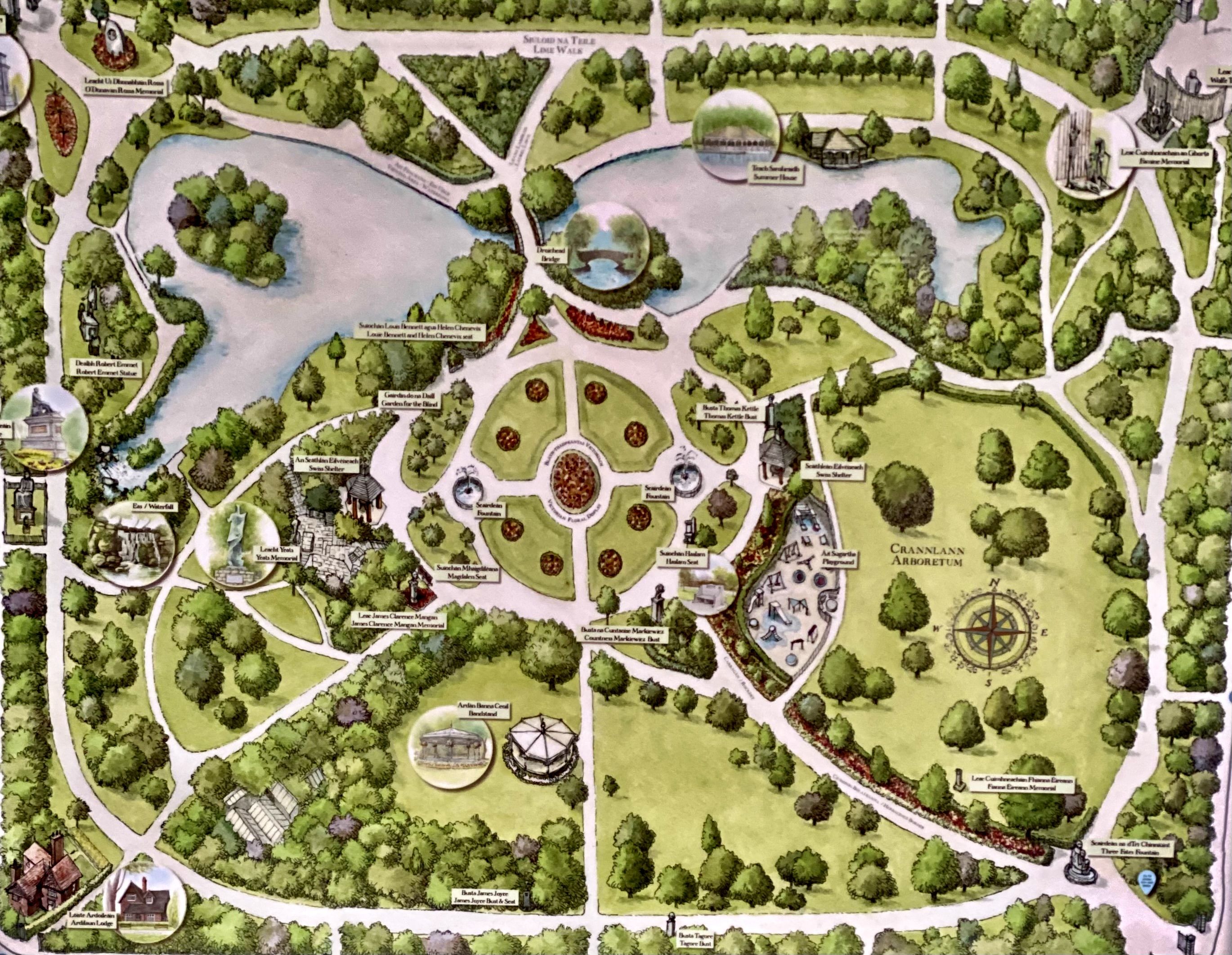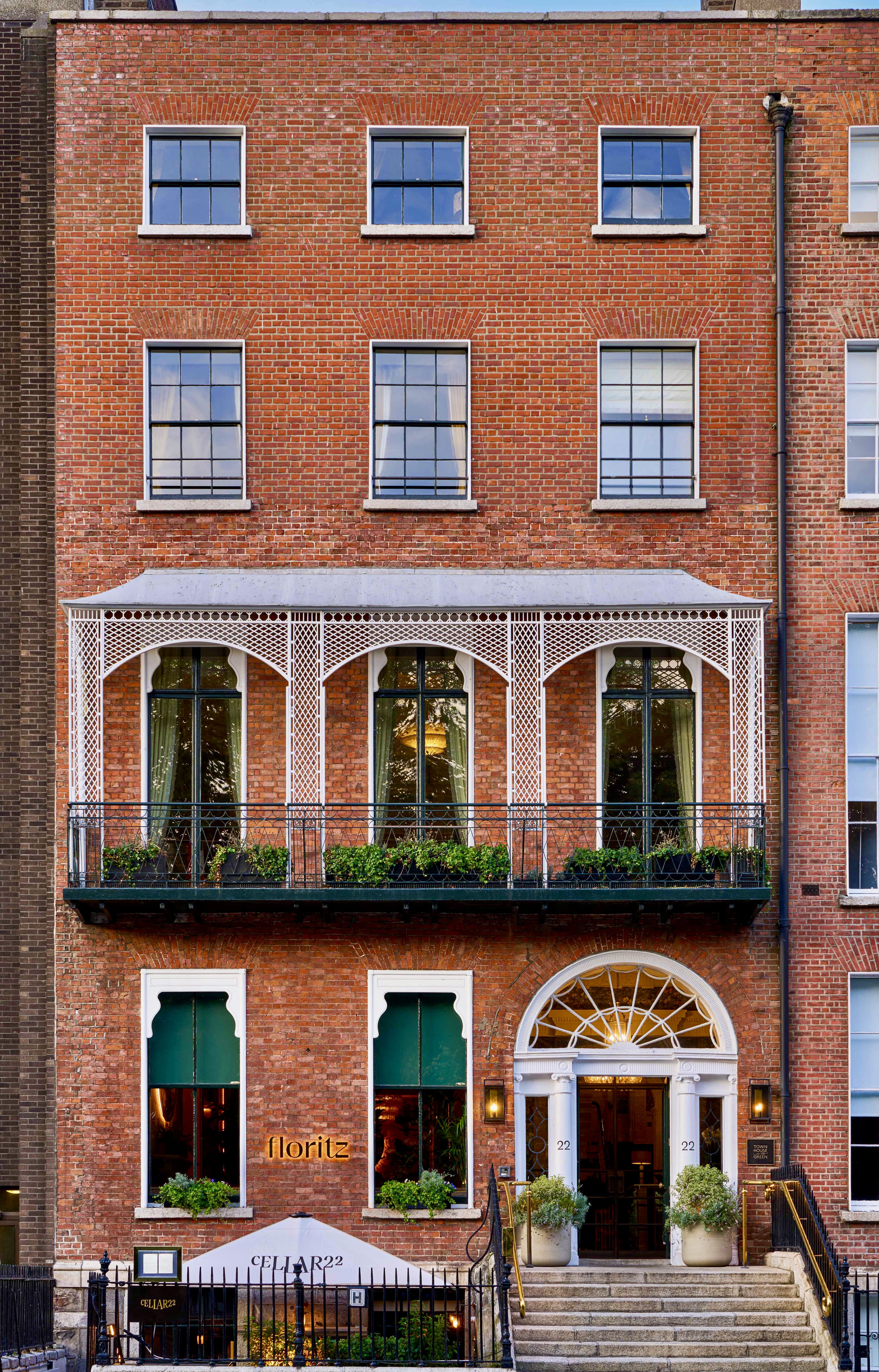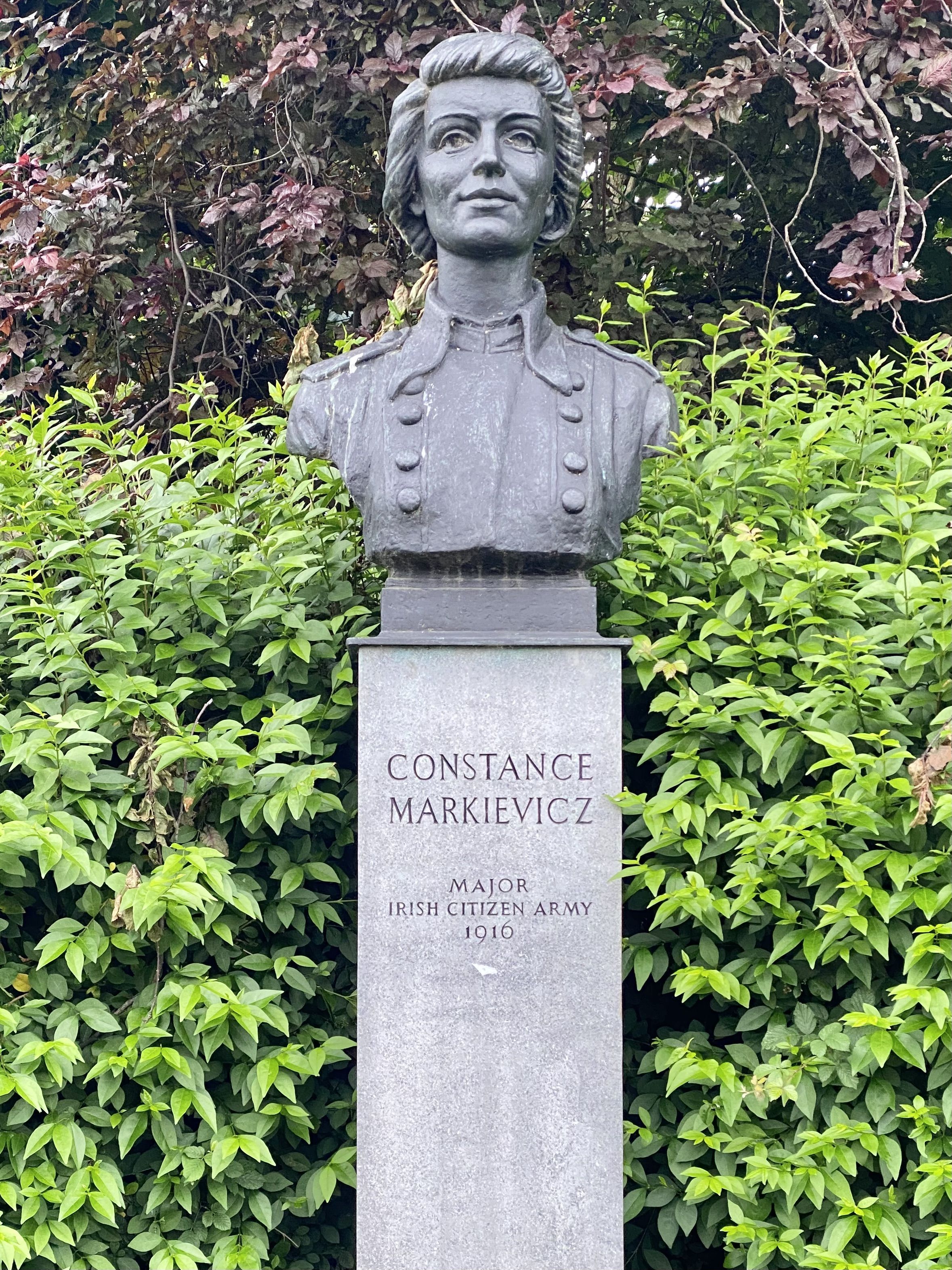If you’ve visited Dublin, chances are you’ve taken a stroll through St. Stephen’s Green, the 27-acre Victorian park located in the heart of the capital. It’s the earliest existing of the city’s great squares — the others are Parnell and Mountjoy on the north side, Merrion and Fitzwilliam on the south side — all of which were developed and built in sequence between 1750 and 1830, with St. Stephen’s being the largest, most accessible, and popular of the city center’s green spaces.
In the 1660s, James Butler, the first Duke of Ormond, decided to redesign Dublin as a capital, and his first project was to create Europe’s largest square. Until then, the area was used as marshy land for grazing livestock. Here’s a look inside and out.
INSIDE THE GREEN
A first-time visitor to St. Stephen’s will probably enter through the Fusiliers Gate, built at the northwest corner in 1907. The gateway arch, dedicated to the men of the Royal Dublin Fusiliers who lost their lives in the Boer War, is located, undoubtedly, at one of the busiest junctions in the city: it’s at the top of Grafton Street, across from St. Stephen’s Green Shopping Center, and adjacent to the Luas green line stop. Once you enter the Green, you have a choice of four perimeter walks (each about a mile in length) — The Beaux Walk on the northern side of the park, Monck’s Walk on the eastern side, Leeson Walk on the south, and French Walk on the west — or you can zigzag through the park like I did.
Regardless of the route you choose, you’ll pass the lake, with its waterfall, island, and hundreds of city-dwelling ducks, swans, and birds; The Bog Garden; Children’s Playground; Bandstand; and Garden for the Blind that contains aromatic shrubs and herbs labelled in Braille. St. Stephen’s is also known for its fifteen commemorative statues and sculptures that celebrate, among others, Irish rebels and writers including Countess Constance Markevicz and James Joyce. A colorful map guides you to places of interest.

Map of St. Stephen’s Green Park or, in Irish, Páirc Fhaiche Stiabhna. [Photo by Margaret M. Johnson]
The landscape of the park largely resembles the Victorian design commissioned by Lord Ardilaun in 1880, with a formal area planted in a symmetrical pattern of paths, lawns, and flowerbeds. The gardens are filled throughout the growing season with colorful displays of bedding plants like tulips, geraniums, and foxglove, the latter in full bloom during my June visit. The park also has more than 750 trees — sycamore, hawthorn, laurel, and evergreens, to name a few — which shelter the park from the bustle and noise outside.
OUTSIDE THE GREEN
While the Green itself holds special significance for Dubliners in general, some of the finest Georgian buildings in the city are located outside the Green on the four streets that surround it. An address here, whether commercial, retail, or residential, is one of the most sought-after in the capital. Some impressive educational institutions call this neighborhood home — nearly the entire stretch of the west side (#111 to #123) is occupied by the Royal College of Surgeons; Boston College has offices at #42 and #43 on the east side; and #53 to #55 is home to Loreto College, a private girls’ school.
Visitors will, naturally, be more interested in food and lodging offerings in the neighborhood, and there’s no shortage of these either. A combination of both can be found at #22, where the Townhouse on the Green (townhouseonthegreen.ie), built in 1790 by adventurer Thomas Lighton, houses a stunning 9-room boutique hotel on the upper floors and two restaurants below. On the first level Floritz (floritz.ie) serves an Asian-leaning menu featuring sushi, yakatori, and tempura; below is Cellar 22 (cellar22.ie) that mixes traditional Irish and Asian specialties.

Townhouse on the Green. (Photo courtesy of Townhouse on the Green)
And then there’s The Shelbourne (theshelbourne.com), stretching from #27 to #34, which has been the social center of Dublin since it opened its doors in 1824. It’s always been part of the fabric of historic Dublin, including serving as the venue for the drafting of the Irish Constitution in 1922. The Lord Mayor’s Lounge, where afternoon tea is served daily, is a place where the ritual is so fiercely followed that not even the 1916 Easter Rising could keep the fine ladies of Dublin from their tea and cakes.
In her book The Shelbourne, Irish author Elizabeth Bowen reported: “While there was some question of whether tea might be more safely served in the library than in the ‘sunny and splendid’ drawing room, there was never any question of cancelling the event. Tea must and would be served and whatever was happening outside the walls of The Shelbourne could wait. The pots of tea and pastries were brought out and civilized conversation flowed. When a stray bullet flew through the window and clipped one petal of a rose in a lady’s hat, the guests finally agreed to move to another room, but they took their tea with them” and probably their scones, a staple on the menu for decades.
LORD MAYOR’S BUTTERMILK SCONES
Makes 16 to 18
3 1/2 cups flour
1 teaspoon baking soda
1 teaspoon salt
1 teaspoon sugar
2 tablespoons cold butter, cut into pieces
2/3 cup buttermilk
1 large egg, beaten
Softened butter and jam, for serving
Clotted cream and lemon curd, for serving (optional)
1. Preheat the oven to 325°F. Line a baking sheet with parchment paper.
2. In a large bowl, sift together the flour, baking soda, and salt; stir in the sugar. With a pastry blender, two forks, or your fingers, cut or work in the butter until the mixture resembles coarse crumbs. Make a well in center. With a wooden spoon, stir in the buttermilk and egg until the mixture forms soft dough.
3. Transfer the dough to a lightly floured surface. Roll out or pat into a 1-inch-thick round. With a 2 1/2-inch biscuit cutter, cut into rounds. Reroll scraps; cut out additional rounds. Transfer the scones to the prepared baking sheet.
4. Bake the scones for 15 minutes, or until risen and browned. Let cool on a wire rack for 10 minutes. Serve with butter, jam, clotted cream, and lemon curd (if using).
Margaret Johnson’s “Recipes” page alternates with “Ireland Hopping: Adventures in Food, Drink, and Travel.” For further details on her work, or to order a signed cookbook, visit irishcook.com. Part 2 will be posted in two weeks.









